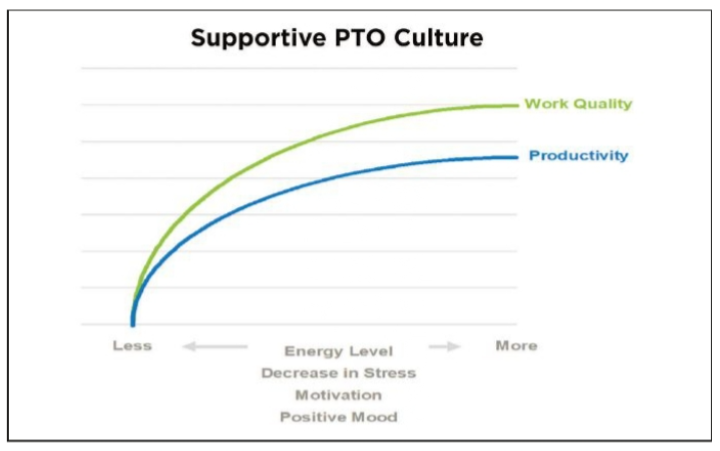Published by America’s Benefit Specialist from NAHU, November 2020.

For many organizations, remote work is a new concept. The global pandemic forced countless numbers of employers to rapidly create a work-from-home environment. The speed at which the transition occurred, at different levels of success, allowed many employers to change negative perceptions of remote work, and unveiled benefits that may have been otherwise unthinkable.
While remote work has been known to produce the following benefits for both employers and employees, the unknown of managing productivity, attendance, and performance has left management skeptical of reaping these rewards.
Against that skepticism, employees quickly rallied to the required change, and productivity was mildly affected for the short term. For employees, the flexibility created a work-life balance they needed and showed management that, with the right resources and accountability measures in place, they could be successful working at home.
Alternatively, there are some employers that continue to see that remote work for a short-term period is tolerable but appreciate the human-to-human interaction of the traditional office environment. There are also
employees who have found working from home challenging and prefer the traditional office environment.
Those employers new to the concept of remote work will find a rhythm. It will be essential, though, for those organizations to have human capital management best practices in place for interviewing and hiring, performance management, and termination of employment to see positive
results prevail.

INTERVIEWING AND HIRING
As employers are finding out, not all employees are suited for remote work. In addition to determining if an applicant has the right qualifications to perform the essential job functions, employers will need to determine if the candidate is capable of long-term success as a remote worker.
Hiring a different skillset with the ability for self-management will require an evaluation of determining if the applicant is:
– a cultural fit for the organization
– an effective communicator
– a great collaborator
– well-organized
– able to manage time efficiently and effectively
– self-disciplined
– able to hold themselves accountable
Behavioral testing tools are beneficial as part of not only the interviewing process in determining long-term success but also should be used throughout the life cycle of the employment for relationship building with both supervisor and the team. Several popular ones exist and are well-vetted behavioral-assessment resources that employers should consider.
It is important to remember that all testing tools, whether behavioral-assessment or skills-based, are just part of the overall interview process and should not be used as the sole criteria for the hiring decision. An organization should be using a combination of interviewing criteria including human resources, the hiring manager, and the team.
PERFORMANCE MANAGEMENT
For a successful remote working relationship, the right resources, tools, and accountability measures should be in place to promote a supportive relationship not only for the employee but also for the success of the managing supervisor.
A trusting management style will be required, and this style is supported by hiring the right candidate and having accountability measures in place that are reflective of the duties of the position. Organizations will need to think beyond the premise that work is getting done if employees are at their desk in an office from 8:00 a.m. until 5:00 p.m., relying instead on the delivery of the established goals for rating performance.
PRODUCTIVITY MANAGEMENT
Productivity management software tools are available. They enable the organization to monitor performance by having the ability to:
• track time
• manage low and high levels of productivity
• maintain IT security
• video-conference for one-to-one supervisor discussions
In addition to monitoring tools that give supervisors confidence in employee productivity, striving to overcome employee challenges working from home should be part of the planning process for developing strategies for a successful remote working relationship.

Promoting a work-life balance culture and keeping engaged with management and the team are top priorities for remote workers. With accountability practices in place and the ability to work in many instances at any time of day or night, supervisors need to ensure that the right lifestyle balance is supported.
For all employees, but more so with remote workers who are working and living in the same space, encouraging employees to use their allocated time off and unplugging is critical to maintaining productivity, reducing stress, and ensuring the holistic well being of employees. A Work and Wellbeing
survey1 conducted by the American Psychological Association found that the positive effects of returning from paid time off left employees with less stress, increased energy, more motivation, and a positive mood. These resulted in an increase in productivity and quality of work.
The same APA study found that two-thirds of the employees who did not return to a supportive culture of work-life balance saw the positive effects of PTO quickly fade as compared to those who had a supported culture of wellbeing.
Leaders can build a supportive culture by:
- Using PTO when sick, for mental health days, and for vacation themselves. The team will look to the leader and traditionally follow in their footsteps. If leaders come to work when ill, that sends a negative image to those who are emulating leadership styles that PTO should
not be used. - Encouraging others to use PTO and then sharing positive experiences of being away, whether it’s the time spent on vacation or mental-health-day experiences.
- Supporting the idea of “unplugging” from all work-related technology, using email out-of-office messaging and apps such as Thrive Away to block time out of the office.
- Reviewing workloads and cross-training so the important work has coverage when an individual is out.
- Allowing employees the opportunity to have the appropriate time to transition smoothly back into the daily routine.
By guiding an employer to build a supportive wellbeing culture around the PTO benefit, an organization’s trusted health and welfare advisor will be able to show employers a positive net effect of the work-life balance is a workforce that is whole, healthy, and productive. The holistic health of employees leads to the holistic health of the organization.

PERFORMANCE AND TERMINATION OF EMPLOYMENT
Whether it be a deterioration in performance requiring a corrective discussion or a termination of employment, this can be one of the least pleasant responsibilities for any manager. It’s more awkward when done remotely.
When possible, these types of crucial conversations should be done in person. If a worksite is not available, a neutral quiet location is the next best spot. Worth noting, these types of conversations should never take place at an employee’s home or done over emails or text messaging. A local hotel will have smaller conference rooms that can be rented at reasonable costs. When remote travel is not possible, using a virtual conference call would be the next best option.
Managers should be prepared for the conversation with all supporting documentation and, if needed, information regarding any final wage and benefit information, IT security, and return of company property.
RETURN OF COMPANY PROPERTY
It is important employers have a record starting with the date of hire of all assigned company property and have it signed off by the employee. A strategy for the return of the property should be developed before it becomes necessary to collect such property.
It is a best practice for a company to cover related expenses for the employee to return the property to the company. In some instances, it may be appropriate for a third party to intervene to retrieve the property.
New services now being offered through concierge vendors include picking up company property from an employee’s home and returning it to the company. Again, a supervisor should never go to the employee home to personally pick up the property. A neutral service can help defuse any negative situation and work toward the safety of all involved.
1 http://www.apaexcellence.org/assets/general/2018-work-and-wellbeing-survey-results.pdf?_
__________________________________________________________
Bobbi Kloss has served as BAN’s director of human capital management services since 2014. She also oversees all HR-related functions for BAN internal practices. She has a deep understanding of the increasingly complex and diverse HR industry, with more than 20 years of human resource generalist and executive-level human capital management experience. Bobbi began her career as an employment law compliance paralegal for a national PEO after graduating with high honors from the Career Institute for Paralegals. She has a passion for service and has helped establish two nonprofit organizations in Texas, co-founding Teenage Parent Program Scholarships in Houston and founding Heritage Children San Antonio in 2003 to help at-risk youth develop necessary life skills. She currently volunteers her time mentoring women in addictive behavior recovery.